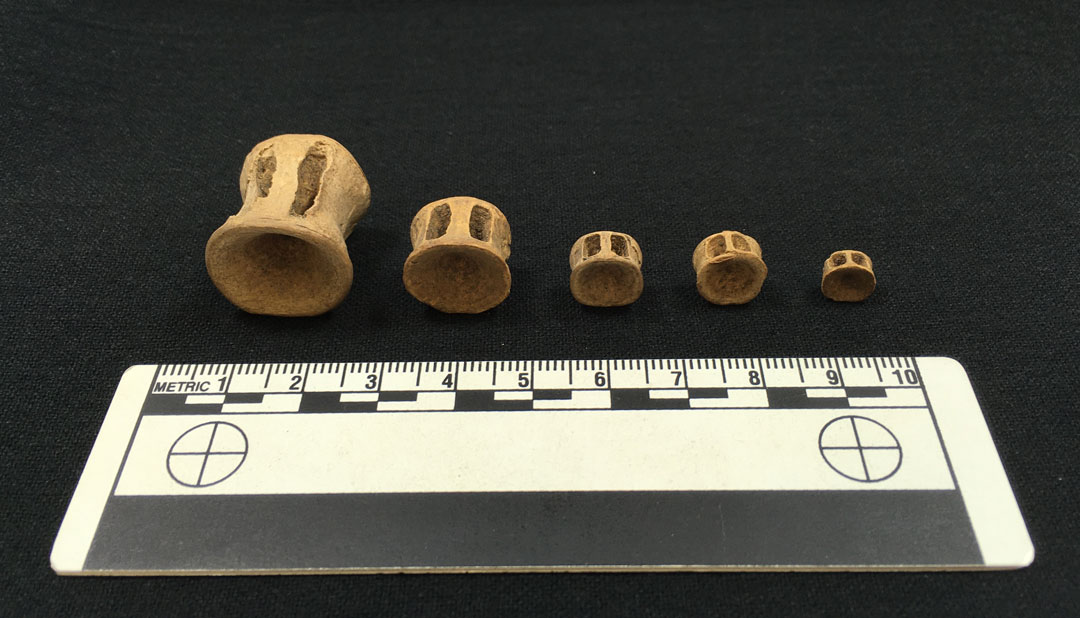Sharkaeology
Towards an Archaeology of Sharks and Fishing in Monterey Bay, California
To truly understand the present, you have to understand the past. Archaeology, the study of the human past, is one tool to do just that. As a zooarchaeologist who studies animal remains like bones and scales from archaeological sites, my research focuses on using ancient fish remains to study long-term human impacts on the environment through processes like overfishing.
To do this, I use modern reference skeletons to identify ancient fish remains. I collect data to track how the kinds of fish people caught changed over time, measure the average size of fish caught in different time periods, and trace the trade of fish over long distances. Just as these data provide insights into past cultures and fishing techniques, they also provide invaluable baseline data about the health of fisheries by revealing previously unknown historic fishing pressures. This is doubly the case when we consider that systematically collected fisheries data rarely existed before the mid-20th century, meaning that modern ecologists often lack scientific data about what healthy fisheries actually look like.

An old photograph of local fishers getting ready for the fish market in the Chinese village near Monterey Bay. Photo supplied by Eric Guiry
Despite growing interest in past marine ecosystems amongst archaeologists, the archaeology of sharks lags behind that of bony fishes like the Atlantic Cod. This is due to several factors, most notably the difficulty of identifying shark vertebrae to a specific shark species due to morphological similarities across shark taxa and a lack of extensive reference shark skeletons in zooarchaeological laboratories. Thankfully, techniques like ancient DNA (aDNA) analysis now allow archaeologists to identify ancient shark vertebrae in ways previously impossible, providing exciting possibilities for studying past shark populations.
I am fortunate to be part of a team led by Dr Eric Guiry that is leveraging aDNA and stable isotope analysis to conduct the most extensive study of archaeological shark remains undertaken to date. We are focusing on Monterey Bay, California, USA, a biodiversity hotspot that is home to over 500 species of fish, including 21 different shark taxa. Our primary study site is the late-19th-century Chinese fishing village at Point Alones, once home to a thriving community located along the southern shore of Monterey Bay in the modern city of Pacific Grove. Previous archaeological fieldwork at the site recovered thousands of fish remains that speak to harvesting, processing, and exporting dried seafood products like shark fins, fish, abalone, and kelp to Chinese communities across the Pacific.

Measuring shark vertebrae. Photo © Eric Guiry
My zooarchaeological analysis of fish remains from Point Alones reveals that Chinese fishers collected a wide range of taxa, including rockfishes, flounders, surfperches, jack mackerel, wolf eels, and sharks. I identified all shark vertebrae as belonging to the family Triakidae, the houndsharks. Still, unfortunately, there are multiple houndshark species found in the nearshore waters of Monterey Bay, where Chinese fishers operated. These species include tope shark, leopard shark, brown smooth-hound, and gray smooth-hound, and differentiating the vertebrae of these species by their morphology is difficult, if not impossible.
Thus, while shark vertebrae from Point Alones corroborate historical accounts of shark fishing and shark fin production by Chinese fishers in California, my analysis on its own doesn’t let us examine the specifics of this industry, including the shark species harvested and the potential long-term impacts this fishery may have had on modern shark populations in Monterey Bay. Thankfully, aDNA analysis by my colleague Dr Thomas Royle and stable isotope analysis by my colleague Dr Eric Guiry provide the keys to identifying the Point Alones shark remains to specific shark species and reconstructing the diet and habitat use of these ancient sharks.
